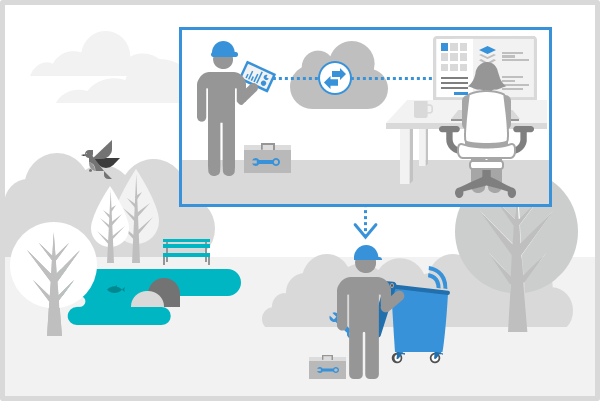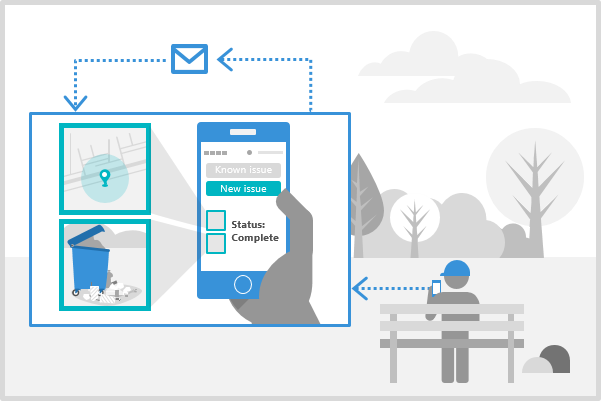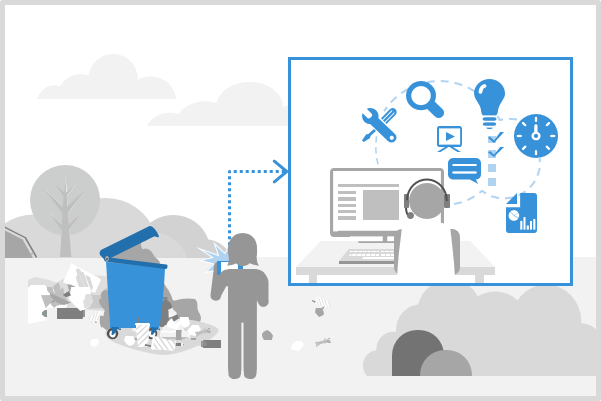
Do more with less: Empowering your employees
Developing and sustaining an engaged, productive workforce is a top priority for government organizations. Across the globe, government employees work diligently to improve the lives of their citizens. Despite their mission to provide high quality citizen services, paper trails, legacy systems, and compliance restrictions are just a few obstacles that governments hurdle daily. And without the right tools, governments are unable to attract a younger, digitally inspired workforce. In fact, governments have one of the smallest millennial workforces with only 9% of federal workers under the age of 29. [1]
The adoption of digital, automated technologies is key to creating a more innovative and productive workforce. There is common misconception, however, that the digital transformation is out of the public sector’s reach, or that it will be a long, slow process. In fact, it’s closer to reality than many might think. Innovative processes and collaborative tools are well within the reach of governments of all sizes, enabling government workers to do more even when resources are scarce.
Answer citizen requests with increased automation, ease and convenience
We’ve met Jane, our imaginary citizen, on other occasions. When she arrived at a messy campsite on her visit to a state park, it was surely a frustrating experience. But did we even consider the monumental headache that the state park faces? Contrary to Jane’s easy one-click submission, the state park might experience hundreds of  other citizen requests coming in simultaneously. Ensuring a pristine campsite across many campgrounds is no simple task, requiring extensive tracking, maintenance, and coordination.
other citizen requests coming in simultaneously. Ensuring a pristine campsite across many campgrounds is no simple task, requiring extensive tracking, maintenance, and coordination.
In a digitally empowered agency, state park employees provide citizens with multiple engagement channels, enabling them to connect anytime, anywhere. As a result, the state park is able to respond to citizen needs quickly, eliminating the need for many manual, error-prone tasks. In this case, a work order is automatically created and a field agent is dispatched to quickly resolve the garbage overflow issue, making the end resolution quick and easy.
Increase mobility so employees can stay connected anytime and work on the go
In our scenario, the state parks department  has empowered their mobile workforce, enabling employees to access trusted information securely, engage with colleagues, and collaborate across departments. From any device, government employees can get things done anywhere, at any time.
has empowered their mobile workforce, enabling employees to access trusted information securely, engage with colleagues, and collaborate across departments. From any device, government employees can get things done anywhere, at any time.
By optimizing resources, the state parks department can quickly share and encompass all the information field workers need to deliver service effectively. Resource management tools enable dispatchers to assign resources and handle scheduling for multiple work orders at a time. With automation, governments can assign work to the most available resources, while optimizing travel time and mileage, and reallocating resources as necessary. In our scenario, the right state park worker is sent to the service location, equipped with the right tools for a first-time fix.
Real time and offline mobile capabilities empower workers with the tools and data to succeed in the field. State park agents update their work status and obtain a real-time list or map view of what’s happening with each service request and location. Additionally, insightful, step-by-step instructions provide insight to state park workers to resolve the task at hand and speed issue resolution.
Improve operational efficiency without increasing budgets
As important as it is to resolve requests on a case by case basis, it’s just as important that state park agents monitor and prevent future garbage overflow situations like Jane’s. By performing predictive maintenance,  governments can detect, troubleshoot, and resolve issues with minimal cost before it becomes a problem for citizens.
governments can detect, troubleshoot, and resolve issues with minimal cost before it becomes a problem for citizens.
Let’s take a real-life example. In remote areas such as the Main Roads in Western Australia, information systems empower field workers to register road maintenance requests and relay repair information back to their regional office. Back at the office, users can quickly schedule and approve jobs and create management reports. The subsequent efficiency means Main Roads can get more maintenance done within existing budgets and across broader geographical areas.
Learn more about Dynamics 365
Let Microsoft Dynamics 365 empower your organization in the same ways it helped the state park department in Jane’s scenario and the Main Roads transportation department. Enable your employees to stay connected anywhere they go, quickly determine and resolve issues, and effectively maintain management processes within budget.

